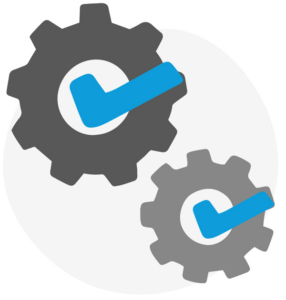3-Ingredient Cocktail for a Change Management Approach-EN

Alfred Maeso Aztarain
- Change Management
- Article
Learn to Change
I am writing this article after delivering, for the first time in consecutive weeks, the three Change Management courses that we offer in our catalog. I think the lessons in each are essential to help create a change management approach to drive changes and transformations in companies.
These courses are: Change Management Foundation, Agile Change Agent, and Lean Change Agent.
As an instructor, I have the opportunity to gain a higher level of comprehension and applicability of the material each time I teach. Recently, this was compounded by the consecutive delivery of these three related courses. The back-to-back training experiences allowed me to connect and integrate the courses’ content to arrive at a greater global understanding of Change Management.
With a fresh memory and my newfound global understanding, I wanted to share my reflections on how organizations can adapt and learn quickly from change.

Transformation in Troubled Times
As if things weren’t already changing fast enough, the COVID pandemic hit. The pandemic, in this regard, provided a very important acceleration in the adoption of technology. In a matter of months, companies advanced the equivalent of several years in digitization, according to previous plans. Aside from the technology advancement, we were also forced into new ways of working that included greater focus on agility, remote working, and the need to find and adopt new business models. Regardless of size and industry, almost all businesses are facing these common challenges, digitalization and new WoW. And, unfortunately, neither is easy to overcome.
Organizational change management must also evolve to fit companies’ pace and needs. It seems today that the traditional separation between managing day-to-day activity and managing change is narrowing, or even non-existent. We are all learning at forced speeds. There is no longer any normal activity without change.
We need to rethink how we drive and manage changes in organizations. The traditional vision of change as a period between transition and stability clashes with reality on a daily basis. Traditional investment-based transformation schemes and long-term plans are overcome by the uncertainty and complexity of the current environment. We are, and very predictably will be, in a state of constant change and adaption.
Rather than managing organizational change, shouldn’t we change organizational management to enable the rapid and continuous adaptation to change?
The Change Management Cocktail
And how do we do this? Firstly, the course itinerary with which I started this article will equip us with the necessary foundational knowledge, because it provides the ingredients that must be present to create the most appropriate cocktail for a change management approach, to our taste and to our company’s taste.

The Change Management Foundation course introduces us to the key elements that we need to understand for successful change management: how we change people, how companies change, how we communicate and interact, and how we put all that into practice. It also teaches the importance of understanding and taking into account the impact that change will have on people, how we as a company can be better prepared to change, and how to motivate change and overcome potential resistance.
Agile Change Agent proposes a concrete structure, a roadmap, a specific way of working change from an agile point of view by always keeping the focus on outcomes and the expected profits and return on investment (ROI). This courses also teaches how to always work in short iterations, integrating activities to build and deliver change with activities to adopt change and measure benefits.
Lean Change Agent, from a systemic approach, seeks to understand the entire ecosystem of change in order to generate continuous alignment and conversation through a three-stage cycle: insights, options, and experiments. It includes a set of specific techniques that we can use or adapt to our particular context. In situations of high complexity and uncertainty, experimentation allows us to learn quickly, minimizing the impact of error.
Each of these courses gives us a different perspective on change management that we can use, balance, and adjust to our characteristics separately or combined with one other.
Basic Rules for a Change Management Approach
When it comes to making the best cocktail, it will depend on the specific tastes of each company. Knowing that there is no single recipe or magic recipe, I wanted to propose some basic rules which, in my opinion, should be present when determining a change management approach. These rules are:
1. Replace Long-Term Plans with Vision
What is the point of drawing up long-term plans when we know that we can’t follow through on them? Try to work by agreeing on a vision, an image of where you would like to be in a few months, a year, or two years. That vision becomes the compass that points all the efforts we make daily towards true North. Support this vision with a narrative to help all people, customers, and suppliers feel like they are a part of it.

2. Provide Certainty in the Process
This is a communication rule which, I believe, is basic in a context of uncertainty. When we have uncertainty about the outcome, provide certainty in the process. It creates a clear structure regarding responsibilities and stages of the journey. Provide certainty for the things you know need to happen: when decisions need to be made, who needs to make them, and on what basis.
“Work out loud.” Let everyone know what is being worked on, who is doing it, and what dates they are organized around. The basic techniques for achieving this are:
- Timeboxing: specific and short periods of time for a task to be fulfilled within
- Prioritization: doing only those tasks that will make it possible, in the time that we have, to make effective decisions and learn

3. Include Everyone
There is no single change; there are as many changes as people who go through it.
Each person lives their own version of changes. Additionally, the focus, interests, and motivations at each level of the organization are different. Therefore, the same change, from the point of view at a strategic level, can be urgent and necessary, while for someone at a team-level, it can be perceived as a loss of quality. Much of the inevitable resistance to change will arise as a result of real problems perceived by people at different levels of the organization.
Listen. Play an active role for all people in change to ensure that we turn problems into solutions. Ensure that everyone’s view is heard and helps shape the best solution. Without losing sight of our true North – the vision that we want to achieve – collaborate to ensure that the solution is adapted to all levels of needs.
Seek ways to create an environment in which such collaboration is possible, in which diversity in ways of thinking and focus, is present. Look for how to generate a continuous conversation around the vision to be sure people are on the same page.

4. Go FromTime to Market to Time to Learn
Time is the most precious resource in periods of accelerated change. What we spend the little time we have on will determine our ability to adapt to changing environments. Invest in your efforts to maximize learning. Apply the law of minimum effort to building the best solution step-by-step. Experiment, understand what hypotheses you are proposing and look for ways to confirm or reject them with minimal impact to the organization.

Finally, dare to change! Organizational change begins with you, for each of us. #BeTheChange #AlwaysLearning
Thank you,
— Alfred

A Change Management Approach
Our NextB Change Framework incorporates all of these learnings and reflections. We can help you apply our framework to bring change into your organization and achieve real transformation together.